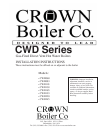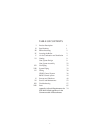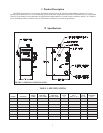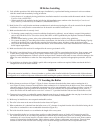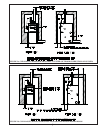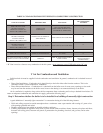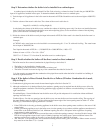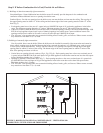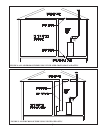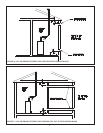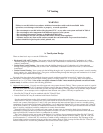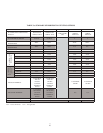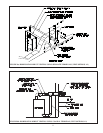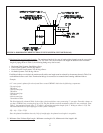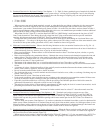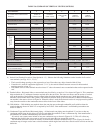
2
2
III Before Installing
1) Safe, reliable operation of this boiler depends upon installation by a professional heating contractor in strict accordance
with this manual and the authority having jurisdiction.
• In the absence of an authority having jurisdiction, installation must be in accordance with this manual and the National
Fuel Gas Code, ANSI Z223.1.
• Where required by the authority having jurisdiction, this installation must conform to the Standard for Controls and
Safety Devices for Automatically Fired Boilers (ANSI/ASME CSD-1).
2) Read Section VI to verify that the maximum combustion air and exhaust pipe lengths will not be exceeded in the planned
installation. Also verify that the vent terminal can be located in accordance with Section VI.
3) Make sure that the boiler is correctly sized:
• For heating systems employing convection radiation (baseboard or radiators), use an industry accepted sizing method
such as the I=B=R Heat Loss Calculation Guide (Pub. #H21 or #H22) published by the Hydronics Institute in Berkely
Heights, NJ.
• For new radiant heating systems, refer to the radiant tubing manufacturer’s boiler sizing guidelines.
• For systems including a Crown Mega-Stor indirect water heater, size the boiler to have either the DOE Heating Capacity
required for the Mega-Stor or the net rating required for the heating system, whichever results in the larger boiler.
• For systems that incorporate other indirect water heaters, refer to the indirect water heater manufacturer’s instructions for
boiler output requirements.
4) Make sure that the boiler received is confi gured for the correct gas (natural or LP).
5) This boiler is not designed for use with return temperatures under 120F for a sustained period of time. Some systems, such
as those having large water contents, may require a return water bypass or other special provisions to protect the boiler
against low return temperatures. Failure to provide such provisions if needed could result in severe corrosion damage to the
boiler. For more information on when low water temperatures protection is required, and appropriate protection, see Part
VIII.
6) For installations at altitudes above 2000ft, special orifi ce and pressure switches are required. Make sure that the boiler is
confi gured for use at the correct altitude.
IV Locating the Boiler
1) Boiler clearances are shown in Figure 2. Figure 2a shows clearances from the boiler when outdoor combustion air is
used. Figure 2b shows clearances from the boiler when combustion air is obtained from the boiler room. These minimum
clearances apply to all types of combustible construction as well as noncombustible walls, ceilings and doors. At least 24”
must be provided for servicing at the front of the boiler. This front clearance may be provided through a door, such as a
closet door. Boiler will be much easier to service if at least 12” is provided from the sides and rear of the boiler to walls.
2) Clearances from venting to combustible material depends upon the type of venting, whether the vent pipe is enclosed, and
whether the venting is vertical or horizontal. See Table 2 for vent clearance information.
3) Boiler may be installed on a non-carpeted combustible surface.
4) The relief valve must not be moved from the location shown in Figure 1.
5) When combustion air is obtained from the boiler room, a 10” clearance is required from the side of the boiler having the air
inlet collar to combustible or non-combustible obstruction (Figure 2b).
6) The boiler should be located so as to minimize the length of the vent system.
7) Do not install this boiler in a location where gasoline or other fl ammable vapors or liquids will be stored or used. Do
not install this boiler in an area where large amounts of airborne dust will be present, such as a workshop. When indoor
combustion air is used, do not install in a location where sources of hydrocarbons will be stored or used. Some common
sources of hydrocarbons include bleaches, fabric softeners, paints, cleaners, refrigerants, and cat boxes. Traces of these
substances can be drawn into the boiler causing severe corrosion damage to the boiler and /or objectionable odors.
NOTICE
This product must be installed by a licensed plumber or gas fi tter when installed within the Commonwealth of Massachusetts.
See Appendix A for additional important information about installing this product within the Commonwealth of Massachusetts.



